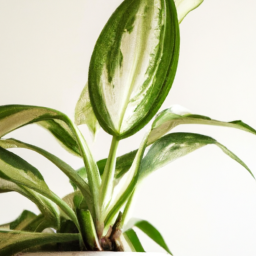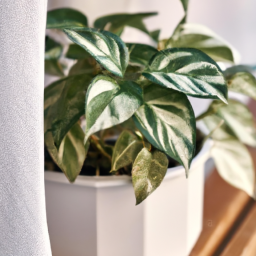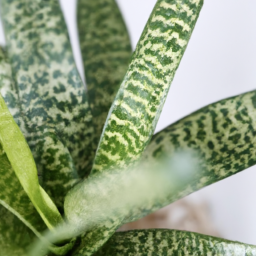
Are you looking to add some greenery to your home but don’t have much natural light to work with? Don’t worry, there are plenty of options when it comes to the best no light plants that can thrive in low light conditions. Whether you have a dark corner that needs brightening up or simply want to add some greenery to a windowless room, there are plants out there that can thrive in these conditions. In this blog post, we’ll explore some of the best no light plants that are perfect for adding a touch of nature to your space, no matter how little light it gets.
Top 5 Best No Light Plants for Indoor Spaces
Introduction
When it comes to indoor plants, finding ones that thrive in low light conditions can be a challenge. However, there are several beautiful and easy-to-care-for plants that can thrive in no light or low light environments. In this guide, we will explore the top 5 best no light plants for indoor spaces, so you can bring a touch of greenery into your home even in the darkest corners.
Snake Plant
The Snake Plant, also known as Mother-in-Law’s Tongue, is a popular choice for low light environments. This hardy plant can survive in almost any conditions, making it perfect for beginners or those with less-than-ideal lighting situations. The Snake Plant has tall, upright leaves that come in a variety of shades of green and yellow, adding a touch of color to any space. It is also known for its air-purifying qualities, making it a great choice for improving indoor air quality.
When caring for a Snake Plant in a no light environment, it is important to allow the soil to dry out completely between waterings. This plant is very drought-tolerant and can easily be overwatered, so be sure to let the soil dry out before watering again. Snake Plants also prefer warmer temperatures and can thrive in a range of humidity levels, making them a versatile and easy-to-care-for option for low light spaces.
In addition to their low light tolerance, Snake Plants are also known for their ability to thrive in a variety of containers, making them a great choice for adding a touch of greenery to any room. Whether you prefer a sleek modern pot or a rustic terracotta planter, the Snake Plant is sure to thrive and add a pop of color to your space.
ZZ Plant
The ZZ Plant is another great option for low light environments, as it can thrive in almost any lighting conditions. This plant has glossy, dark green leaves that add a touch of elegance to any space, making it a popular choice for indoor gardens. The ZZ Plant is also known for its air-purifying qualities, making it a great choice for improving indoor air quality in no light spaces.
When caring for a ZZ Plant in a no light environment, it is important to allow the soil to dry out completely between waterings. This plant is very drought-tolerant and can easily be overwatered, so be sure to let the soil dry out before watering again. ZZ Plants also prefer warmer temperatures and can thrive in a range of humidity levels, making them a versatile and easy-to-care-for option for low light spaces.
In addition to their low light tolerance, ZZ Plants are also known for their ability to thrive in a variety of containers, making them a great choice for adding a touch of greenery to any room. Whether you prefer a sleek modern pot or a rustic terracotta planter, the ZZ Plant is sure to thrive and add a touch of elegance to your space.
Peace Lily
The Peace Lily is a beautiful and elegant plant that can thrive in low light environments, making it a great choice for indoor spaces with limited natural light. This plant has dark green leaves and white flowers that add a touch of beauty to any room, making it a popular choice for home decor. The Peace Lily is also known for its air-purifying qualities, making it a great choice for improving indoor air quality in no light spaces.
When caring for a Peace Lily in a no light environment, it is important to keep the soil consistently moist but not waterlogged. This plant prefers higher humidity levels and can benefit from regular misting to keep its leaves looking their best. Peace Lilies also prefer warmer temperatures and can thrive in a range of lighting conditions, making them a versatile and easy-to-care-for option for low light spaces.
In addition to their low light tolerance, Peace Lilies are also known for their ability to thrive in a variety of containers, making them a great choice for adding a touch of elegance to any room. Whether you prefer a sleek modern pot or a rustic terracotta planter, the Peace Lily is sure to thrive and add a touch of beauty to your space.
In conclusion, there are several beautiful and easy-to-care-for plants that can thrive in no light or low light environments. Whether you choose the hardy Snake Plant, the elegant ZZ Plant, or the beautiful Peace Lily, you can bring a touch of greenery into your home even in the darkest corners. With a little care and attention, these plants will thrive and add a touch of beauty to your indoor spaces.

How to Choose and Care for No Light Plants
Choosing the Right No Light Plants
When it comes to choosing the right no light plants for your home or office, there are a few key factors to consider. First and foremost, you’ll want to think about the amount of space you have available. Some no light plants, such as snake plants and ZZ plants, can grow quite large, so be sure to choose a plant that will fit comfortably in your space.
Next, consider the level of care and maintenance you’re willing to provide. Some no light plants, like succulents and air plants, require very little attention and can thrive in almost any environment. Others, such as peace lilies and spider plants, may need more regular watering and pruning to stay healthy.
Finally, think about the aesthetic you’re going for. No light plants come in a wide variety of shapes, sizes, and colors, so choose plants that complement your existing decor and personal style.
Caring for Your No Light Plants
Once you’ve chosen the perfect no light plants for your space, it’s important to provide them with the proper care to ensure they thrive. Here are a few tips for caring for your no light plants:
1. Watering: Most no light plants prefer to be watered sparingly, as overwatering can lead to root rot. Be sure to allow the soil to dry out between waterings, and always use room-temperature water to avoid shocking the plant.
2. Light: While these plants can survive in low-light conditions, they still need some indirect sunlight to thrive. Place your plants near a window or under a grow light to ensure they get the light they need.
3. Temperature: No light plants generally prefer temperatures between 60-75 degrees Fahrenheit. Avoid placing them near drafty windows or vents, as sudden temperature changes can stress the plant.
4. Fertilizing: Most no light plants don’t require regular fertilizing, but you can give them a boost with a diluted, balanced fertilizer once or twice a year during the growing season.
5. Pruning: Regular pruning can help keep your plants looking neat and healthy. Remove any dead or yellowing leaves, and trim back overgrown branches to encourage new growth.
Troubleshooting Common Issues
Even with the best care, no light plants can still encounter problems from time to time. Here are a few common issues you may encounter and how to address them:
1. Yellowing leaves: Yellowing leaves can be a sign of overwatering, underwatering, or nutrient deficiencies. Check the soil moisture and adjust your watering schedule accordingly. If the issue persists, consider repotting the plant with fresh soil.
2. Pest infestations: No light plants are susceptible to pests such as spider mites and mealybugs. If you notice any signs of infestation, isolate the affected plant and treat it with a natural insecticide or insecticidal soap.
3. Wilting: Wilting can be a sign of underwatering, overwatering, or root rot. Check the soil moisture and adjust your watering schedule as needed. If the roots appear mushy or black, repot the plant in fresh soil and trim away any damaged roots.
By following these tips for choosing and caring for your no light plants, you can create a lush and vibrant indoor garden that thrives in even the darkest corners of your home or office. Remember to regularly check on your plants, provide them with the proper care, and enjoy the beauty they bring to your space.

Benefits of Having No Light Plants in Your Home
Are you looking to add some greenery to your home but don’t have a lot of natural light? No light plants are the perfect solution for you! These plants thrive in low-light conditions, making them ideal for indoor spaces that don’t get a lot of sunlight. In addition to brightening up your home, no light plants offer a range of benefits that can improve your overall well-being. Let’s explore some of the advantages of having these plants in your living space.
1. Improved Air Quality
No light plants, such as snake plants and peace lilies, are known for their air-purifying properties. These plants can help remove toxins and impurities from the air, making your indoor environment cleaner and healthier. By adding these plants to your home, you can breathe easier and reduce your risk of respiratory issues caused by poor air quality.
Additionally, no light plants release oxygen during the photosynthesis process, which can help increase oxygen levels in your home. This can lead to better sleep, improved concentration, and overall enhanced well-being. With their ability to filter out pollutants and provide fresh oxygen, no light plants are a great addition to any indoor space.
Furthermore, having plants in your home can help regulate humidity levels, which is especially beneficial during the dry winter months. No light plants can release moisture into the air, creating a more comfortable and healthy indoor environment. By improving air quality and humidity levels, these plants can contribute to a happier and healthier home.
2. Stress Reduction
Studies have shown that being around plants can help reduce stress and anxiety levels. No light plants can have a calming effect on individuals, promoting relaxation and a sense of well-being. The presence of greenery in your home can create a peaceful and tranquil atmosphere, providing a natural escape from the hustle and bustle of daily life.
In addition, caring for plants can be a therapeutic and rewarding experience. Tending to your no light plants, such as watering and pruning, can help you unwind and destress after a long day. The act of nurturing living organisms can bring a sense of purpose and fulfillment, fostering a positive mindset and reducing feelings of stress and tension.
By incorporating no light plants into your home, you can create a soothing and rejuvenating environment that promotes relaxation and mental well-being. These plants can serve as natural stress relievers, helping you unwind and recharge in the comfort of your own space.
3. Aesthetic Appeal
No light plants come in a variety of shapes, sizes, and colors, making them versatile and visually appealing additions to your home decor. Whether you prefer lush foliage or delicate blooms, there is a no light plant to suit your personal style and taste. These plants can add a touch of nature to any room, creating a vibrant and inviting atmosphere.
Furthermore, no light plants can serve as decorative accents that enhance the aesthetic appeal of your living space. Whether displayed in a hanging planter, on a shelf, or as a centerpiece on a table, these plants can elevate the look of your home and bring a touch of greenery indoors. With their beauty and charm, no light plants can transform any room into a cozy and welcoming sanctuary.
Incorporating no light plants into your home decor can add a pop of color, texture, and life to your living space. These plants can brighten up any room and create a warm and inviting atmosphere that you and your guests will appreciate. With their aesthetic appeal and decorative versatility, no light plants are a stylish and practical choice for enhancing your home environment.
Recap of this article
Are you tired of struggling to keep your indoor plants alive because of a lack of natural light? Look no further! In this blog post, we’ll be discussing the best no light plants that are perfect for brightening up any space in your home without the need for direct sunlight. These plants are not only beautiful and easy to care for, but they also thrive in low-light conditions, making them the perfect addition to any room.
Some of the top no light plants include the snake plant, pothos, and peace lily. These plants are known for their ability to thrive in low-light environments and require minimal maintenance, making them ideal for busy plant parents or those with limited natural light in their homes. So if you’re looking to add some greenery to your space but don’t have access to direct sunlight, consider adding one of these no light plants to your collection for a touch of nature and beauty in your home.
Let me leave you with some FAQs:
Q1: What are the best no light plants for indoor spaces?
A1: Some of the best no light plants for indoor spaces include snake plants, pothos, peace lilies, spider plants, and ZZ plants. These plants are known for their ability to thrive in low light conditions.
Q2: How often do I need to water no light plants?
A2: No light plants typically require less frequent watering compared to plants that need more sunlight. It is important to let the soil dry out between waterings to prevent overwatering, which can be harmful to the plants.
Q3: Can I place no light plants in rooms with no windows?
A3: Yes, you can place no light plants in rooms with no windows as long as there is some form of artificial light source, such as a grow light. These plants can still thrive in low light conditions as long as they receive some light.
Q4: Do no light plants require any special care or maintenance?
A4: No light plants are generally low maintenance and do not require any special care. However, it is important to dust the leaves occasionally to ensure that they can absorb as much light as possible.
Q5: Are there any benefits to having no light plants in my home?
A5: Yes, there are several benefits to having no light plants in your home. These plants can help improve indoor air quality, reduce stress, and add a touch of greenery to your living space without the need for direct sunlight.

James Wong is a renowned ethnobotanist, plant scientist, and local television presenter. With a passion for demystifying plant science, he is known for translating complex botanical concepts into practical advice for everyday plant enthusiasts. James’s expertise spans from traditional gardening to cutting-edge plant technologies, making his insights accessible and informative.


